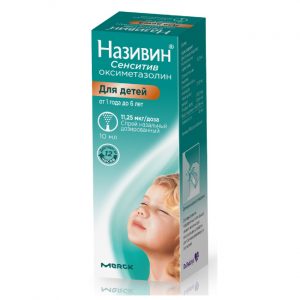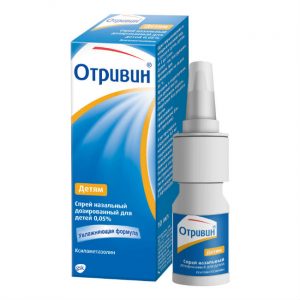Description
Release form
Powder for oral solution.
Pharmacological action
Pharmacological action
Pharmacological action – anti-inflammatory, antipyretic, anti-congestive.
Pharmacodynamics
Combined drug, the effect of which is due to the composition of its constituent components.
Paracetamol has an analgesic and antipyretic effect due to inhibition of GHG synthesis in the central nervous system.
Phenylephrine is a postsynaptic alpha-adrenergic receptor agonist with low affinity for cardiac beta-adrenergic receptors. Decongestant, constricts blood vessels, eliminates swelling and hyperemia of the nasal mucosa.
Pharmacokinetics
Paracetamol is rapidly and completely absorbed in the small intestine. Cmax in the blood is observed 15 20 minutes after ingestion. Systemic bioavailability is determined by presystemic metabolism and, depending on the dose, ranges from 70 to 90%. Paracetamol is rapidly distributed throughout all body tissues and has a T1 / 2 of approximately 2 hours. It is metabolized in the liver and excreted in the urine in the form of glucuronides and sulfate compounds (> 80%).
Phenylephrine is rapidly absorbed from the digestive tract. The level of primary metabolism is quite high (about 60%), so oral administration of phenylephrine reduces its bioavailability (about 40%). Cmax in blood plasma is observed after 1 2 hours, and T1 / 2 varies from 2 to 3 hours. It is excreted in the urine in the form of sulfate compounds. Oral administration of phenylephrine as a decongestant should be carried out at intervals of 4-6 hours.
Indications
Symptoms of colds and flu: headache, sore throat, other types of pain, nasal congestion, fever.
Special instructions
The drug should not be combined with ethanol.
During the period of treatment, it is necessary to refrain from taking sleeping pills, anxiolytic drugs, as well as other drugs, containing paracetamol.
The drug distorts the results of laboratory tests evaluating the concentration of glucose and uric acid in plasma.
Contains sucrose. The drug is contraindicated in patients with rare congenital fructose intolerance, glucose-galactose malabsorption, or sucrose / isomaltase deficiency.
Contains aspartame (E951), a source of phenylalanine. May be toxic to patients with phenylketonuria.
Influence on the ability to drive a car or perform work that requires an increased speed of physical and mental reactions. When driving and engaging in other potentially dangerous activities, it must be taken into account that the drug can cause side effects such as dizziness and confusion.
Composition
1 pack
active ingredients:
paracetamol 1000 mg
phenylephrine hydrochloride 12.2 mg
excipients: ascorbic acid – 100 mg sucrose – 1936 mg citric acid – 812 mg sodium citrate – 501 mg aspartame – 25 mg acesulfame potassium – 65 mg dye quinoline yellow – 1 mg lemon flavor F / 29088 – 30 mg lemon flavor F / 29089 – 240 mg lemon flavor F / 28151 – 240 mg lemon flavor F / 501.476 / AP0504 – 40 mg
Dosage and administration
Dissolve the contents of one sachet in hot but not boiling water (250 ml). Allow to cool to an acceptable temperature and drink. Adults and children over 18 years old – one sachet. If necessary, repeat the intake every 4-6 hours, but not more than 4 doses (sachets) per day. The drug is not recommended for use for more than 5 days as an anesthetic and 3 days as an antipyretic without consulting a doctor. If symptoms persist, consult a doctor.
Side effects
Paracetamol
Allergic reactions: rarely – skin rash, urticaria, anaphylaxis, bronchospasm, angioedema.
From the central nervous system: rarely – dizziness.
From the hematopoietic system: rarely – aplastic anemia, methemoglobinemia, increased blood pressure is very rare – pathological changes in the blood, such as thrombocytopenia, agranulocytosis, hemolytic anemia, neutropenia, leukopenia, pancytopenia.
From the digestive system: rarely – nausea, vomiting, dry oral mucosa, hepatotoxic effect.
From the urinary system: rarely – urinary retention, nephrotoxicity (papillary necrosis).
Other: rarely – paresis of accommodation, increased intraocular pressure, mydriasis.
Phenylephrine
From the CCC: rarely – tachycardia, increased blood pressure.
From the nervous system: rarely – insomnia, nervousness, tremors, anxiety, irritability, confusion, irritability and headache.
From the digestive system: often – anorexia, nausea and vomiting.
On the part of the immune system and skin: rarely – allergic reactions, including skin rash, urticaria, anaphylaxis and bronchospasm.
Drug interaction
Paracetamol
Stimulators of microsomal oxidation in the liver (phenytoin, ethanol, barbiturates, flumecinol, rifampicin, phenylbutazone, tricyclic antidepressants) increase the production of hydroxylated active metabolites, which makes it possible.
Paracetamol enhances the effect of indirect anticoagulants and reduces the effectiveness of uricosuric drugs.
The absorption rate of paracetamol increases with metoclopramide or domperidone, and decreases with colestyramine.
The anticoagulant effect of warfarin and other coumarin derivatives is enhanced with prolonged use of paracetamol.
The drug enhances the effects of MAO inhibitors, sedatives, ethanol.
Phenylephrine
With the simultaneous use of phenylephrine with antidepressants, antiparkinsonian, antipsychotic drugs, phenothiazine derivatives, urinary retention, dry oral mucosa, constipation are possible.
When used with corticosteroids, the risk of developing glaucoma increases.
Tricyclic antidepressants increase the adrenomimetic effect of phenylephrine, the simultaneous administration of halothane increases the risk of ventricular arrhythmia.
Overdose of
Paracetamol
Liver damage is possible in adults who take 10 g or more of paracetamol. Taking 5 g or more of paracetamol can cause liver damage if there are risk factors: prolonged treatment with carbamazepine, phenobarbital, phenytoin, primidone, rifampicin or other drugs that induce liver enzymes, alcohol abuse, lack of glutathione (for example, malnutrition), cystic fibrosis, HIV infection, starvation, cachexia.
Symptoms: with an overdose of paracetamol in the first 24 hours – blanching, nausea, vomiting, anorexia and pain in the abdomen.
Damage to the liver can occur in the period from 12 to 48 hours after application of the drug.
In case of an overdose of paracetamol, despite the absence of primary symptoms of an overdose, it is necessary to seek qualified help at a medical institution. To prevent the serious consequences of an overdose, the necessary measures should be taken in a timely manner.
Symptoms may occur only partially in the form of nausea or vomiting, and may not reflect the actual degree of overdose or risk of organ damage.
In severe overdose – liver failure with progressive encephalopathy, coma, death, acute renal failure with tubular necrosis (including in the absence of severe liver damage) arrhythmia, pancreatitis.
Phenylephrine
Symptoms: irritability, headache, increased blood pressure. In the event of the indicated symptoms of an overdose, it is necessary to consult a doctor.
Treatment: the introduction of SH-group donors and precursors of glutathione synthesis – methionine within 8 9 hours after an overdose and acetylcysteine within 8 hours. The need for additional therapeutic measures (further administration of methionine, iv administration of acetylcysteine) is determined depending on the concentration of paracetamol in the blood, as well as from the time elapsed after its administration.
Storage conditions
At a temperature not exceeding 25 ° C.
Keep out of the reach of children.
The Expiration of
is 3 years.
pharmacy leave without prescription
Dosage for
oral solution




